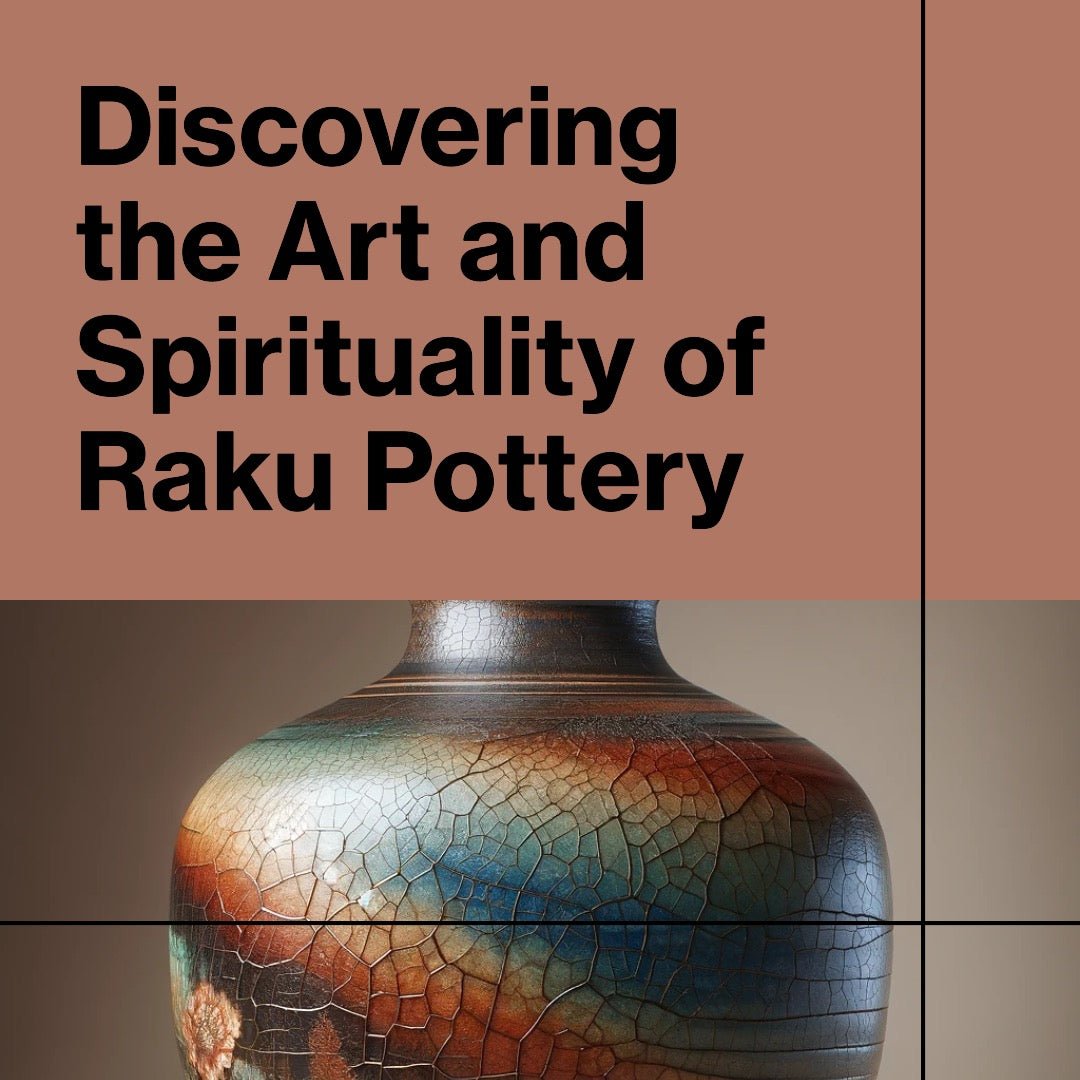
What is Raku? Exploring the Art and Spirituality of Japanese Pottery
Raku pottery, an ancient Japanese art form, intertwines spirituality, craftsmanship, and the serendipitous beauty of imperfections. Originating in the 16th century, Raku has transcended time, continuing to captivate artists and collectors alike with its unique aesthetic and philosophical depth. In this blog post, we delve into the world of Raku, uncovering its history, techniques, and enduring appeal in modern pottery.
Key Takeaways
Key Takeaway Description Origin Originated in 16th Century Japan, deeply rooted in Buddhist practices and tea ceremonies. Characteristics Hand-shaped, porous vessels made with low firing temperatures and unique glazing techniques. Cultural Significance Integral to Japanese culture, symbolizing the wabi-sabi aesthetics and spiritual connections. Techniques Includes the use of combustible materials for effects and the 'Naked Raku' method. Modern Influence and Adaptation Continues to be practiced and evolved, influencing artists globally.
Historical Background
The Origins of Raku in 16th Century Japan
Raku pottery emerged during a culturally rich period in Japan, strongly influenced by Buddhist philosophies and the revered tea ceremony rituals. It was during this time that the first Raku potter, Chijiro, began crafting what would become a pivotal art form in Japanese culture. The name 'Raku' itself, meaning enjoyment, happiness, or comfort, perfectly encapsulates the essence of this pottery style.
Influence of Buddhism and Tea Ceremonies
Buddhism played a significant role in shaping the principles and aesthetics of Raku pottery. The art form's focus on simplicity, naturalness, and the beauty found in imperfections aligns seamlessly with Buddhist teachings and the concept of wabi-sabi.
The Process of Raku Pottery Making
From Clay to Kiln: The Journey of a Raku Pot
The process of creating Raku pottery is as unique as the pieces themselves. Typically, it involves:
- Shaping: Each piece is hand-shaped, emphasizing a personal touch.
- Bisque Firing: The pottery is first fired at a relatively low temperature (around 800°C or 1472°F).
- Glazing: Special Raku glazes are applied, which play a crucial role in the final appearance.
- Final Firing: The glazed pottery is then placed in a Raku kiln.
- Reduction: After reaching the desired temperature (about 1000°C or 1832°F), the pieces are removed and subjected to a reduction process, often involving combustible materials.
For more insights on choosing the right kiln for Raku and other pottery forms, explore The Top 3 Home Pottery Kilns and a beginner's guide to Pottery Kiln for Beginners.
Artistic Significance and Techniques
The Role of Serendipity in Raku Pottery
The essence of Raku lies in its unpredictability and the acceptance of imperfection. Each piece embodies the philosophy of 'happiness in the accident,' where the final outcome is left to chance and the unique conditions of each firing.
Exploring Raku Techniques
- Traditional Japanese Raku: Emphasizes simplicity and natural beauty, often used in tea ceremonies.
- Western Raku: A variation that allows for more experimentation with glazes and post-firing reduction techniques.
- 'Naked Raku' Method: Involves applying a slip that cracks and flakes off, revealing a textured surface.
Raku Pottery in Modern Times
Contemporary Artists and Raku
Today, Raku continues to inspire artists worldwide, who are drawn to its blend of tradition and innovation. These artists often add their twists to the classic techniques, expanding the boundaries of Raku pottery.
Global Influence and Adoption
Raku pottery, once a uniquely Japanese art form, now enjoys global popularity. Workshops, exhibitions, and collectors can be found worldwide, highlighting the universal appeal of this distinctive pottery style.
Summary Table: Modern Raku Pottery
Aspect Description Contemporary Artistic Practice Embraces traditional methods while incorporating new ideas. Global Reach Raku has gained a worldwide following, crossing cultural boundaries. Diversity in Techniques Modern Raku sees a blend of Japanese and Western techniques.
Conclusion
The Enduring Appeal of Raku Pottery
Raku pottery stands as a testament to the beauty of imperfection and the richness of cultural traditions. Its continued evolution and global reach signify its versatility and enduring appeal.
The Enduring Legacy of Raku Pottery
Raku Pottery: A Bridge Between Past and Present
Raku pottery not only connects us to the rich history and culture of 16th-century Japan but also serves as a contemporary artistic expression. This art form has become a symbolic bridge, linking the past with the present and the traditional with the modern.
Raku in Contemporary Art and Education
The influence of Raku extends beyond artistic circles into educational realms. Many pottery classes and workshops globally incorporate Raku techniques, teaching new generations the value of this unique art form.
Conclusion
Celebrating the Art of Raku
In conclusion, Raku pottery exemplifies a harmonious blend of art, tradition, and spirituality. Its appeal lies in its distinctive aesthetic, the unpredictability of each piece, and the philosophical depth it represents. This art form continues to inspire and evolve, maintaining its relevance in the modern world.
Key Reflections on Raku Pottery
- Cultural Heritage: Raku pottery is a living testament to Japan's rich cultural history.
- Artistic Expression: It offers a unique medium for artists to explore creativity and embrace imperfection.
- Global Influence: Raku's popularity worldwide showcases its universal appeal and adaptability.
- Educational Value: Through workshops and classes, Raku pottery educates and inspires future generations of artists.

